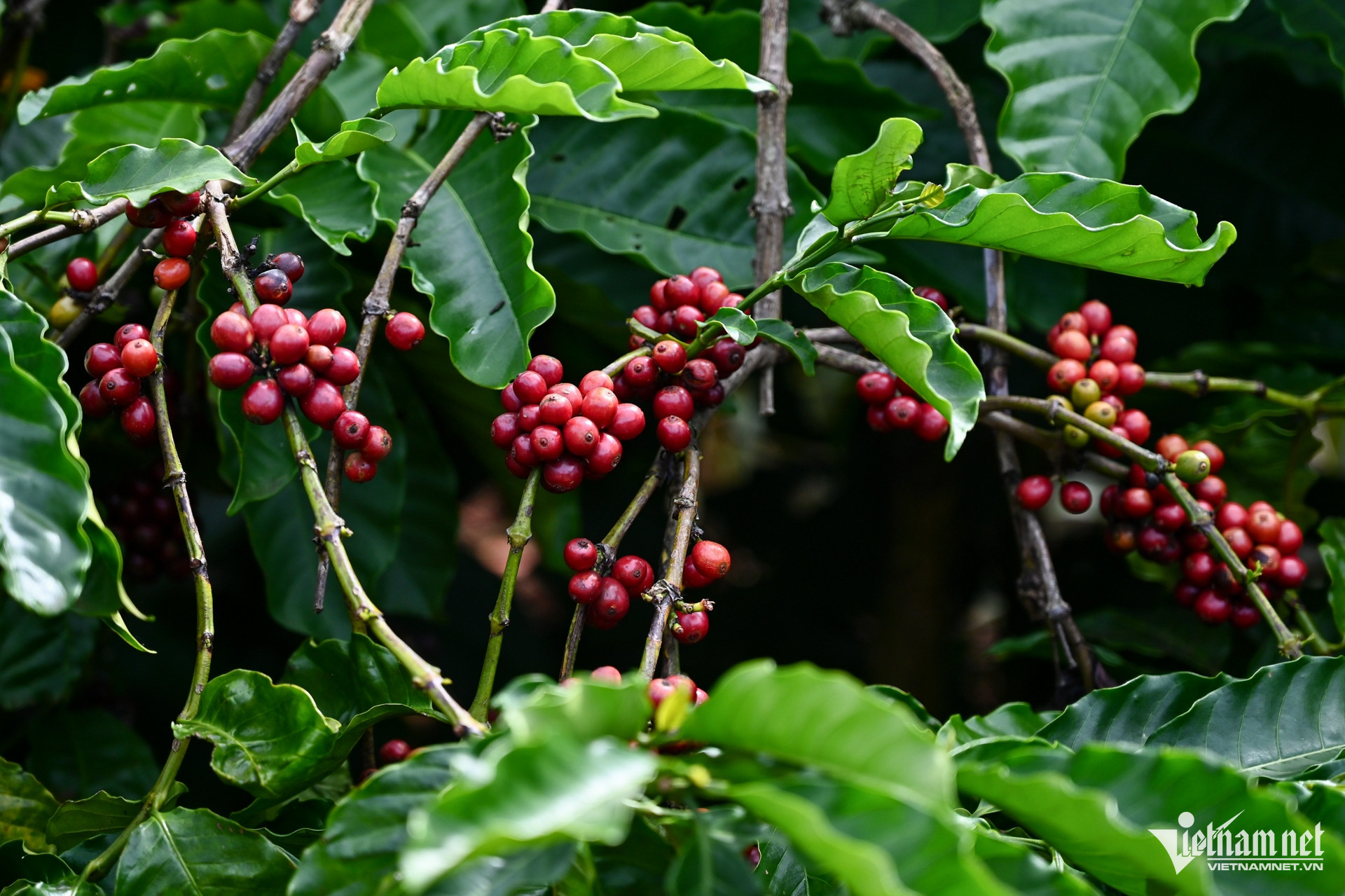
Often compared to a "gold mine" that never runs dry, Vietnam’s coffee industry has generated $1.58 billion in just the first two months of the year, benefiting from historically high global prices.
Record-breaking coffee exports
According to the latest report from the Ministry of Agriculture and Environment, Vietnam exported approximately 150,000 tons of coffee in February, earning $854.2 million. This shattered the previous record of $729 million set in January.
In total, Vietnamese coffee exports for the first two months of 2025 reached 284,000 tons, generating $1.58 billion. While export volume declined by 28.4% compared to the same period last year, the total value surged by 26.2% due to soaring prices.
The average export price over the past two months was estimated at $5,575 per ton - an astonishing 76.3% increase from early 2024.
On the global market, the price of Robusta coffee (in which Vietnam is the world’s leading producer) has been on an upward trend, hitting a record $5,817 per ton on February 13. Although prices have slightly cooled, they remained high at $5,330 per ton for May 2025 futures as of March 3.
In Vietnam’s domestic market, raw coffee beans reached a historic peak of 134,000 VND ($5.36) per kilogram in early March. By March 3, prices remained strong at 128,000–130,000 VND ($5.12–$5.20) per kilogram.
Key export markets and surging demand
The Ministry of Agriculture and Environment reported that Germany, Italy, and Japan are Vietnam’s top three coffee export destinations, holding market shares of 16.6%, 9.4%, and 8.2%, respectively.
Compared to January 2024, Vietnamese coffee exports in January 2025 saw a 53% increase in value to Germany, a 5.6% rise to Italy, and a 10.4% jump to Japan. Among the top 15 export markets, Poland saw the most significant growth, with Vietnamese coffee exports nearly tripling.
Supply constraints drive prices higher
Experts attribute the sustained high coffee prices to a combination of global political and economic factors, as well as supply and demand dynamics.
Worldwide demand for coffee continues to rise, while supply constraints in key producing regions are putting upward pressure on prices. Brazil, the world’s largest coffee producer, has faced drought conditions that are expected to reduce output. Meanwhile, Vietnam’s coffee production fell by 10–15% in the last harvest season, leading to a drop in inventory levels.
The Brazilian Coffee Industry Association recently forecasted that global coffee prices will continue to rise in the coming months. The country, which accounts for nearly half of the world’s coffee supply, has struggled with extreme weather conditions for four consecutive years, severely impacting crop yields.
Additionally, Brazil’s next harvest is still months away, while Vietnam’s harvest has only recently concluded. This supply gap suggests that coffee prices will likely remain at elevated levels in the near future.
The need for sustainable growth in Vietnam’s coffee industry
Vietnam’s coffee sector remains a critical component of its agricultural economy. The Ministry of Agriculture and Environment estimates the country’s total coffee production for 2025 at 1.95 million tons, similar to 2024 levels.
Phan Minh Thong, CEO of Phuc Sinh Group, emphasized that unlike finite mineral resources, agricultural commodities like coffee offer a renewable source of wealth. However, long-term sustainability depends on strategic development.
"Vietnamese agriculture, including coffee and pepper, is like an endless treasure trove. The key is having a sustainable development strategy. If done right, agribusinesses can not only enrich Vietnam’s agricultural ecosystem but also generate significant profits," Thong stated.
He expects global coffee roasters to increase their purchases from Vietnam and Indonesia, signaling that coffee prices may continue to rise. Based on current market trends, Thong projects that Vietnam’s coffee exports could surpass $6 billion, potentially reaching $7 billion by the end of 2025.
During a press briefing on March 3, Deputy Minister of Agriculture and Environment Phung Duc Tien acknowledged that coffee remains one of Vietnam’s fastest-growing agricultural exports, despite declining export volumes. He expressed optimism that the sector could reach $6 billion in export revenue this year.
However, Tien emphasized the need for investment in technology and advanced processing techniques.
"Right now, we are still primarily exporting raw coffee beans, while other countries focus on processed and packaged products. The real added value lies in deep processing," he noted.
Given the limited land available for coffee expansion, Vietnam must improve productivity and integrate advanced processing methods to maximize value. This, Tien concluded, is the key to achieving the country’s ambitious export goals for 2025.
Tam An